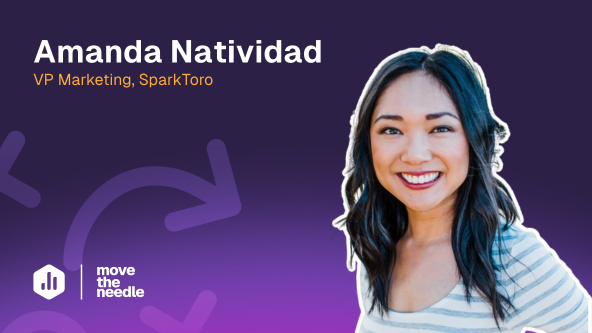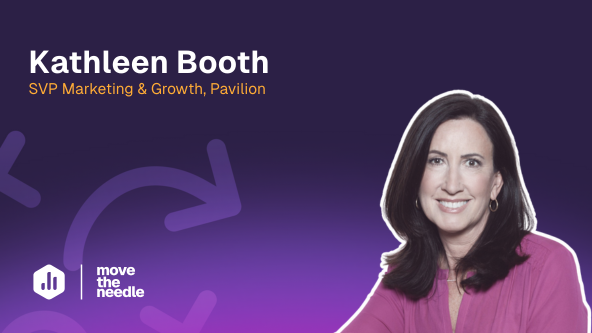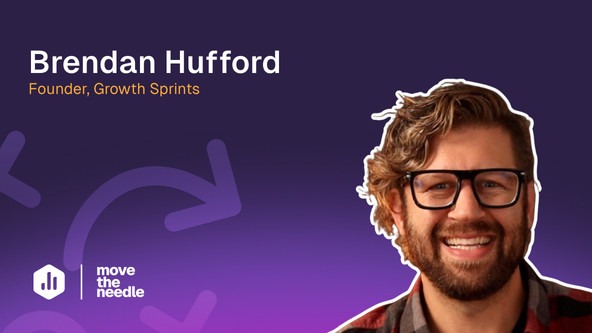Table of contents
Amanda Natividad coined the term “zero-click content,” and now it’s everywhere. But there’s still a lot of confusion about what it is, how to do it right, and how to prove it works. In this episode of Move the Needle, Amanda, the VP of Marketing at SparkToro, lays out a new model for marketing success in an era where clicks are harder to come by, attribution is fuzzy, and impressions are more valuable than ever.
Watch the interview
What Is Zero-Click Content?
Zero-click content refers to content designed to provide value within the platform itself – with no click required. Think of it as self-contained content that still teaches, informs, or inspires, even if the user never leaves the platform.
That includes, of course, social channels like LinkedIn, X (Twitter), and Instagram, but also online discussion boards like Reddit or communities like Slack or Discord.
As Amanda explains it, “Zero-click content is content that is native to the platform, has standalone value, and no additional context is needed.”
After observing this shift several years ago, Amanda grew her own Twitter following from under 1,000 to over 10,000 in a year and built an email list from 0 to 8,000 subscribers using a “zero-click” approach.
Why Zero Click Matters More Than Ever
Amanda explains that social and search platforms are increasingly hoarding traffic.
First, there’s the devastating traffic decline that most organizations have experienced due to AI overviews and other SEO changes. In fact, 60% of Google searches now end without a click.
Then, there’s the social platforms, where the platform providers themselves have shared that social posts with links are likely to see lower reach.
This isn’t just a hunch. As Amanda shared, when Elon Musk bought Twitter, he showed how the algorithm detects posts with links as definite spam vector.
And in their own transparency report, Meta revealed that 97.3% of all Facebook posts that get views don’t contain an external link.
“We know that these things are true,” says Amanda. “The platforms are hoarding traffic.”
And then there’s the tracking piece. More than ever, traffic from dark social is largely untrackable and gets lumped in with “direct” as the traffic source.
Amanda sums it up: ““What I’m saying, it’s not never drive people to your blog or email list or your podcast. What I’m saying is that you can’t reliably count on that [click] to happen.”
The Solution: Build Algorithmic Capital
If you can’t count on clicks or track the ones you do get, what should you optimize for?
Amanda has the answer: “You optimize for impressions, for reach. You accrue some algorithmic capital by posting zero-click content. And then every now and then, you can burn a little bit of that capital by posting a link.”
The strategy:
- Post high-value, link-free content consistently
- Earn trust from both the algorithm and your audience
- Occasionally share a link when it really matters (demo, launch, signup)
How to Measure Zero-Click Content
Traditional ROI metrics don’t reflect the impact of zero-click content. Amanda suggests a shift in mindset: focus on Value on Investment (VOI).
“VOI – Value on Investment – means thinking a little bit more holistically and taking a more long-term focused approach.”
She notes that not every initiative will generate a clear ROAS in days or weeks. Some campaigns build value slowly across channels like email, organic, and social.
What to measure:
- Branded search trends
- Social reach and engagement
- Referral lift from dark social
- Qualitative intel
Earning Stakeholder Buy-In
Marketers aren’t the only ones who care about performance. Sales, finance, and leadership still expect results. Amanda’s approach? Help them meet their goals, and earn their trust along the way.
“I try to create content that meets the sales team’s business objectives. If it’s not ROI or VOI, it’s at least showing you value their time and their partnership. And that will take you places.”
From building a literal book of case studies for sales to maintaining a claim-approval database for legal, Amanda shares real strategies for earning cross-functional trust.
How to build stakeholder buy-in:
- Ask stakeholders what they need most
- Build those into your content plan
- Track how content supports their goals, not just yours
- Buy yourself some leeway to test your own ideas
Reporting Like Amanda Natividad: Sample Dashboard
We asked Amanda to describe her dream dashboard… and some of her key metrics included tracking how people are subscribing to her newsletter, and how they convert afterwards.
Check it out in Databox below!
Explore plug-and-play templates
Databox already has lots of other prebuilt templates to help marketing teams show value beyond last-click attribution.
Zero-Click Content Templates
- Social Networks (Growth & Engagement) Dashboard
- LinkedIn Company Page Engagement
- Facebook Page Insights
- X (Twitter) Account Overview
- Instagram Account Overview
→ Explore 30+ Social Media Dashboard Templates
Brand Awareness & Demand Signal Templates
- Social Media (Awareness & Engagement)
- GA4 Website Traffic
- HubSpot (Leads by Source)
- Email Traffic Overview











